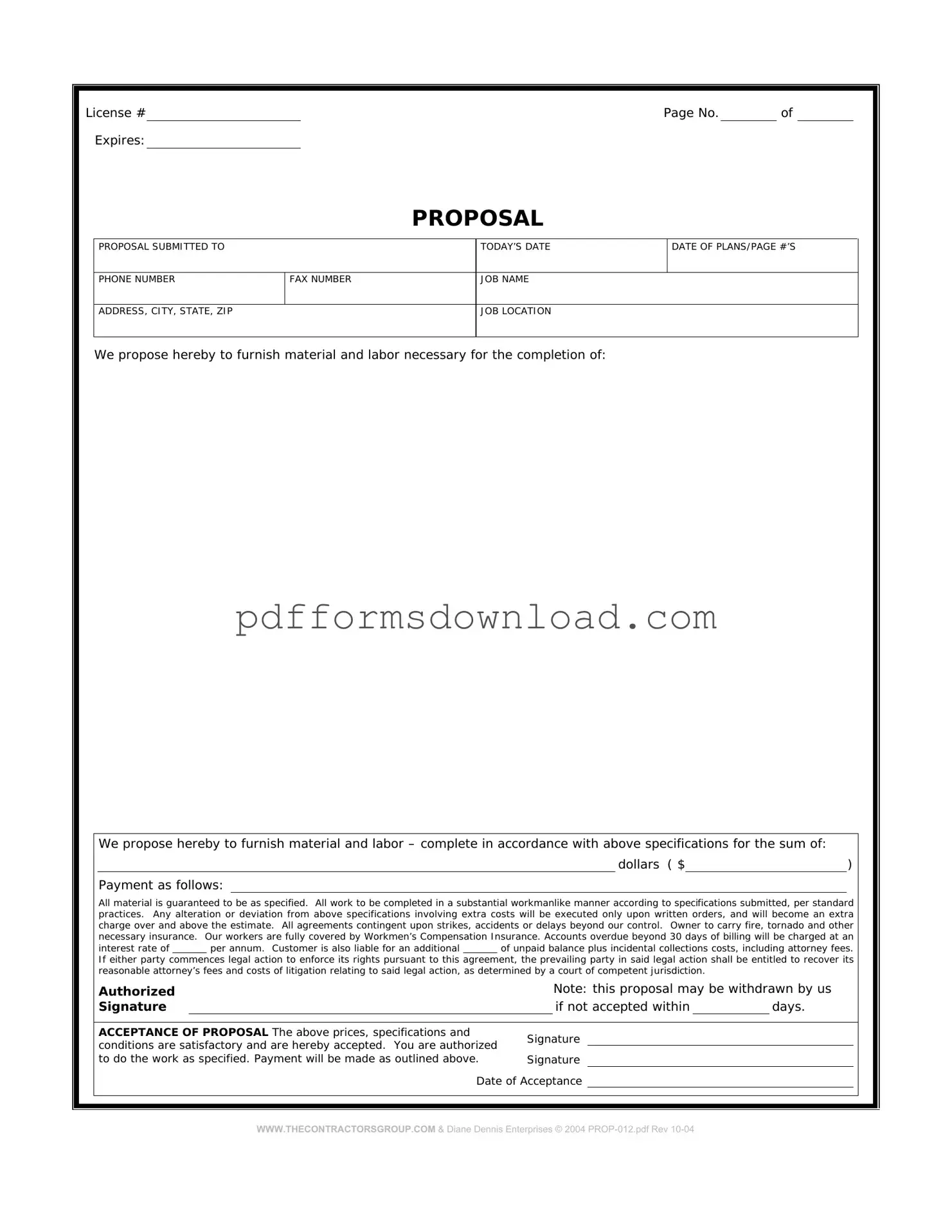What is a construction proposal form?
A construction proposal form is a document that outlines the terms and conditions under which a contractor agrees to undertake a construction project. It includes details such as project scope, timelines, costs, and payment schedules. This form serves as a formal offer from the contractor to the client, providing clarity on what services will be delivered and at what price.
Why is a construction proposal form important?
This form is essential for both contractors and clients as it sets clear expectations for the project. It helps prevent misunderstandings by detailing the work to be done, the materials to be used, and the timeline for completion. Additionally, it can serve as a legal document in case of disputes, ensuring that both parties have a reference point for their agreement.
What information should be included in a construction proposal form?
A comprehensive construction proposal form should include the following information: project description, materials and labor costs, payment terms, project timeline, contractor's qualifications, and any necessary permits or licenses. Including these details ensures that both parties have a mutual understanding of the project's requirements and expectations.
How do I fill out a construction proposal form?
To fill out a construction proposal form, start by clearly defining the scope of work. Break down the project into manageable sections, specifying the tasks involved. Next, estimate costs for materials and labor. Be sure to include your payment terms and project timeline. Finally, review the form for accuracy and completeness before presenting it to the client.
Can a construction proposal form be modified after submission?
Yes, a construction proposal form can be modified after submission, but both parties must agree to any changes. It’s advisable to document any modifications in writing to avoid confusion later. This may involve creating an addendum to the original proposal or drafting a new proposal altogether, depending on the extent of the changes.
Is a construction proposal form legally binding?
While a construction proposal form is not a contract by itself, it can become legally binding if both parties accept the terms outlined within it. Once the client signs the proposal, it may establish a contractual agreement. Therefore, it is crucial to ensure that all terms are clear and agreed upon before signing.
How does a construction proposal form differ from a construction contract?
A construction proposal form serves as an initial offer, outlining the proposed work and costs, while a construction contract is a more formal agreement that includes the terms and conditions of the project. A contract typically follows the acceptance of the proposal and includes additional legal protections and obligations for both parties.
What should I do if I have questions about the construction proposal form?
If you have questions about the construction proposal form, it is advisable to consult with a construction attorney or a legal expert specializing in contracts. They can provide guidance on the specifics of the form, clarify legal implications, and ensure that your interests are adequately protected.
Where can I obtain a construction proposal form?
You can obtain a construction proposal form from various sources, including legal form websites, construction industry associations, or by consulting with a legal professional. Many templates are available online that can be customized to meet your specific project needs. Always ensure that the form complies with local laws and regulations.
